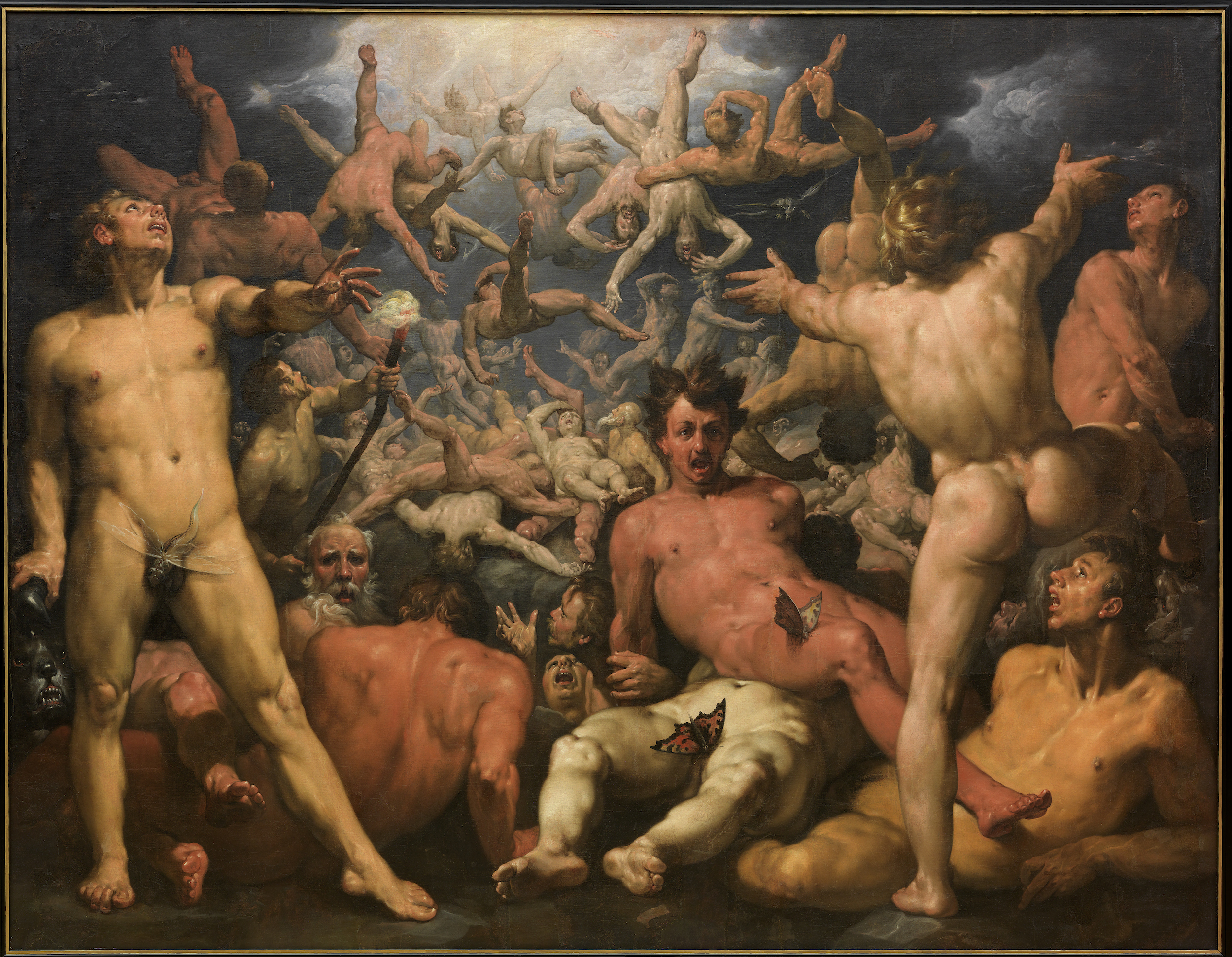This painting just made me shout: "WOW". The rear of the Titan on the right totally violated my eyes. Welcome to Mannerism!
The Roman poet Ovid’s Metamorphoses relate the story of a reigning race of gods consisting of the titans, the cyclopes, and the giants who were challenged to a cosmic battle by the Olympian gods headed by Zeus.
The fierce battle, the so-called titanomachia, ended with the defeat of the titans, whom Zeus cast down into Tartarus, the underworld, from where they cause earthquakes and volcanic eruptions.
Cornelis Cornelisz van Haarlem brought all his artistic ideals to bear in the naked muscular bodies and the complicated poses. Studies from the nude did not become common until the late 17th century, but in Haarlem Karel van Mander (1548-1606) founded an academy that did not only use academic nudes for practice, but also debated art theory.
This painting is an example of the resultant Haarlem Mannerist style. Mannerism is a designation used for a style between the Renaissance and the Baroque that celebrated the artificial and the sensual. The style was cultivated in places such as the court of Rudolph II (1552-1612) in Prague and travelled north, winning over royals such as the Danish King Christian IV (1557-1648). The Fall of the Titans was among the Dutch paintings purchased by him in 1621.


 Cornelis Cornelisz. van Haarlem
Cornelis Cornelisz. van Haarlem